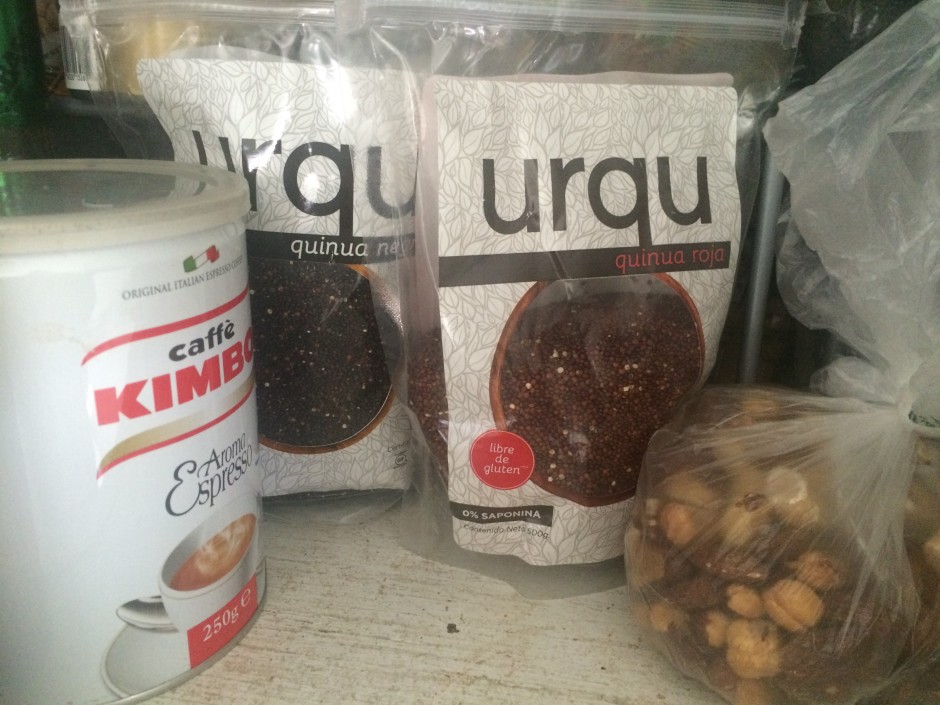
Prior to this week’s ‘Metrics Monday, I had last posted on March 23 about my new working paper with Johanna Fajardo-Gonzalez and Seth Gitter on the welfare impacts of rising quinoa prices.
Since then, I have criss-crossed the North American continent, presenting my work in New York, Minnesota, Alberta, and New Mexico, which means that I have had no time to blog until Monday morning.
Since I discussed our quinoa paper, however, there has been quite a bit of media interest in our findings. Here is a brief roundup of the most interesting media stories (the other stories I saw were written by people whom I did not actually speak to, and often their stories were just reprising details from the two stories I discuss below).
First, there was this story by Brad Plumer on Vox:
In January 2013, agricultural economist Marc Bellemare was browsing the internet when he noticed a raging debate about (of all things) quinoa. Specifically, whether people in rich countries should feel guilty about eating it.
This was the height of the “superfood” craze, recall, and Americans and Europeans were scarfing down quinoa — a high-protein alternative to rice with a rich, nutty flavor — by the bucketful. Global quinoa prices had nearly tripled between 2006 and 2013.
Some commenters feared the West’s quinoa binge would spell disaster for the developing world … [O]ther pundits … countered that the price increase would be a boon to farmers who grew the crop.
The quinoa debate was lively, but it all struck Bellemare as a bit superficial. “None of these arguments had good data behind them,” he told me. So he did what economists do: he started hunting for data.
Then came this longer story by Jeremy Cherfas on NPR:
The price of quinoa tripled from 2006 to 2013 as America and Europe discovered this new superfood. That led to scary media reports that the people who grew it in the high Andes mountains of Bolivia and Peru could no longer afford to eat it. And while, as we reported, groups working on the ground tried to spread the word that your love of quinoa was actually helping Andean farmers, that was still anecdote rather than evidence.
The lack of evidence didn’t seem right to Marc Bellemare, an agricultural economist at the University of Minnesota, or Seth Gitter, another economist at Towson University in Maryland. They hadn’t met, but Gitter knew of a data source that could provide solid evidence, and the two teamed up. They recently published their results in a working paper.
(In case you don’t know about him, Jeremy Cherfas is also the host of the Eat This podcast, which anyone with an interest in food-qua-cultural-phenomenon and food policy should listen to. The podcast is so good, in fact, that it has been nominated for a James Beard award for the second year in a row.)
With that said, it is interesting to see the difference between what is of interest to journalists vs. what is of interest to social scientists. Last Friday, I was presenting the results of some experimental work I have been doing on producer attitudes to price uncertainty at the University of New Mexico. During her introduction, the colleague who had invited me finished by mentioning NPR’s story on our quinoa paper.
This made me muse about how even though there had been a great deal of media interest in the quinoa paper, the experimental work I was about to present would almost surely generate zero media interest due to its nuts-and-bolts nature.
Yet that experimental work is much more fundamental to economics than the quinoa paper, which focuses on a commodity that is relatively small in terms trade volume. So it goes, I guess, as Kurt Vonnegut would have it.